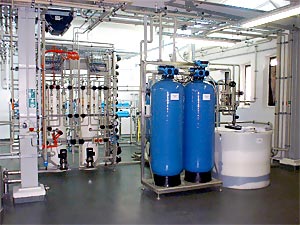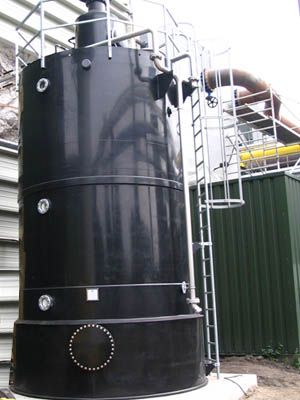Water softening systems with ION exchange and brine tank
 Plant examples
Plant examples
 Plant examples
Plant examples
For decades, ion exchange has been a method of softening water. By neutral exchange of calcium ions for sodium ions, the alkaline earth ions that easily separate out are removed from the water to be treated. The ion exchange process is facilitated by the concentration difference between the resin surface and the water compounds. As soon as the alkaline earth ions concentration between both has reached the same level, the resin must be regenerated. Regeneration is carried out through a brine solution that is made in a brine storage tank. The solution runs through the resin bed, establishing a high sodium ion concentration there. Ion exchange may now start again.
EnviroDTS water softening installations are always customised to a particular project. They are designed for the water hardness, the consumption volume and the type of draw-off. The installation design is adapted to the required capacity and the contact time of the water with the ion exchange resin. For large softening plants, a brine silo can be installed, which is refilled by a truck. The exact control of the regeneration process is facilitated by single valves with position limit switches. This allows the exact brine amount and concentration as well as rinse and flow rate to be set. The exact setting cuts operating costs and thus allows economic operation of the plant.
Softener vessels are normally installed in groups, so that there is always enough softened water available during regeneration.



